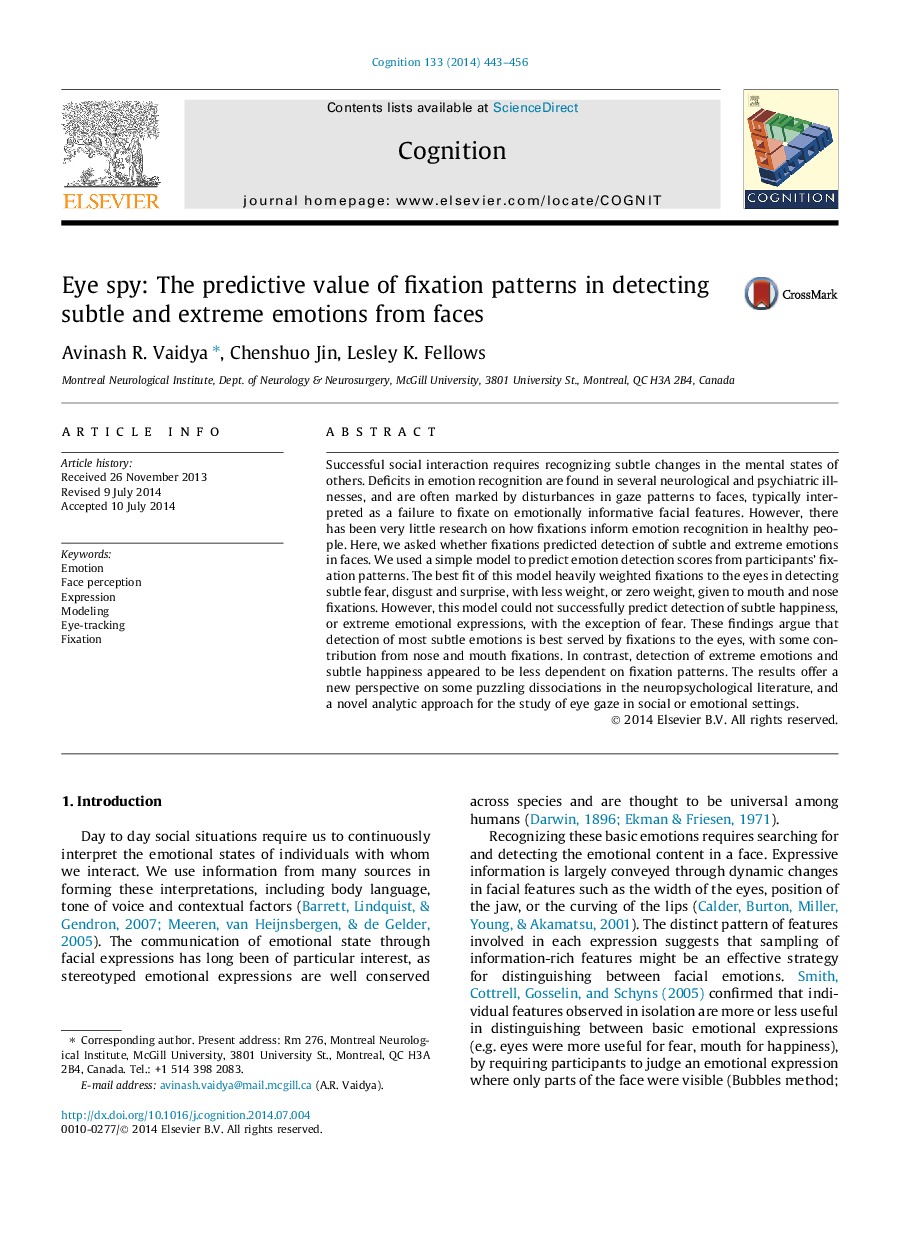| Article ID | Journal | Published Year | Pages | File Type |
|---|---|---|---|---|
| 10457511 | Cognition | 2014 | 14 Pages |
Abstract
Successful social interaction requires recognizing subtle changes in the mental states of others. Deficits in emotion recognition are found in several neurological and psychiatric illnesses, and are often marked by disturbances in gaze patterns to faces, typically interpreted as a failure to fixate on emotionally informative facial features. However, there has been very little research on how fixations inform emotion recognition in healthy people. Here, we asked whether fixations predicted detection of subtle and extreme emotions in faces. We used a simple model to predict emotion detection scores from participants' fixation patterns. The best fit of this model heavily weighted fixations to the eyes in detecting subtle fear, disgust and surprise, with less weight, or zero weight, given to mouth and nose fixations. However, this model could not successfully predict detection of subtle happiness, or extreme emotional expressions, with the exception of fear. These findings argue that detection of most subtle emotions is best served by fixations to the eyes, with some contribution from nose and mouth fixations. In contrast, detection of extreme emotions and subtle happiness appeared to be less dependent on fixation patterns. The results offer a new perspective on some puzzling dissociations in the neuropsychological literature, and a novel analytic approach for the study of eye gaze in social or emotional settings.
Related Topics
Life Sciences
Neuroscience
Cognitive Neuroscience
Authors
Avinash R. Vaidya, Chenshuo Jin, Lesley K. Fellows,
